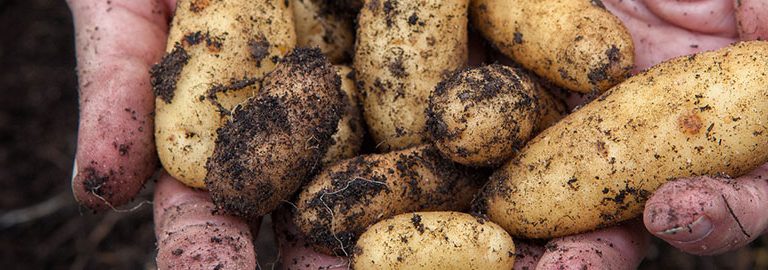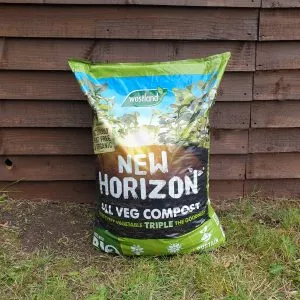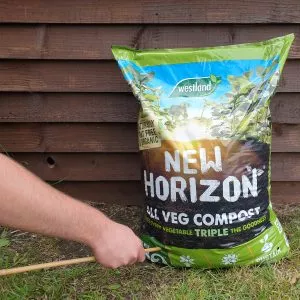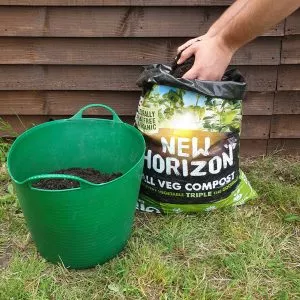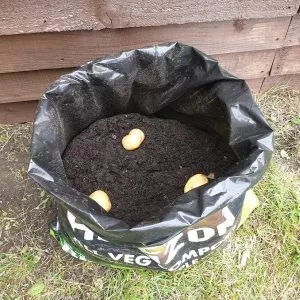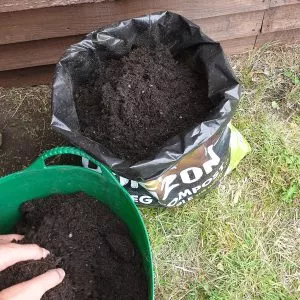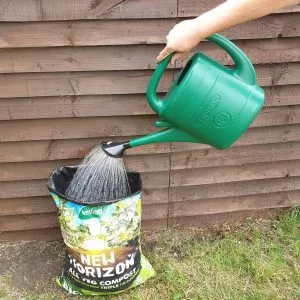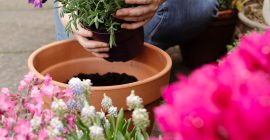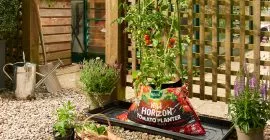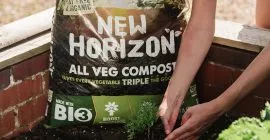There’s no container necessary for this step-by-step guide on how to grow potatoes, as you can sow them directly into the compost bag! New Horizon All Vegetable Compost is fantastic for growing potatoes and it’s 100% sustainable, natural and peat-free. It’s specially blended for all types of vegetables and feeds for up to 6 weeks. Both the planet and your plants will thank you!
- Firstly, place the bag on its end. Shake to loosen the contents and firm the bag into a cylinder.
- Next, pierce approximately 6 evenly spaced drainage holes around the base of the planter.
- Then, remove half the compost and keep to one side. Roll down the packaging.
- Place 2 or 3 seed potatoes into the bag.
- Now, unroll the packaging and cover the potatoes with the remaining compost.
- Finally, water thoroughly. Keep well-watered throughout the growing period.
- Feed with a liquid tomato feed once established to help boost your crop!
Now you’ve learnt how to grow potatoes, take a look at when to harvest:
| Cropping Type | Planting Time Begins | Final Planting Date | Harvest From Planting Date |
| First early potatoes | End of February | Late May | 10 weeks |
| Second early potatoes | March | Late May | 13 weeks |
| Early maincrop potatoes | March | Late May | 15 weeks |
| Maincrop potatoes | March | Mid May | 20 weeks |
| Second cropping potatoes | Early August | End of August | 11 weeks |
Please note that the dates are a guide and can vary depending on the growing season.
What is New Horizon?
New Horizon is the next generation of compost from Westland. Until now, gardeners had to choose between peat-based or peat-free compost. Although compost containing peat can give great results, many gardeners are choosing to be more eco-friendly. Some peat-free composts lack nutrients and don’t give the desired results. However, through 18 years of research and £40 million investment, gardeners no longer need to compromise.
New Horizon All Vegetable Compost
Taking an eco-friendly approach to growing your own? New Horizon All Vegetable Compost gives fruits and vegetables every reason to thrive. You can also combine this compost with top soil to create raised beds and borders for vegetable patches. Whether you own an allotment or simply sow in pots, it’ll transform your harvest while looking after the planet.

